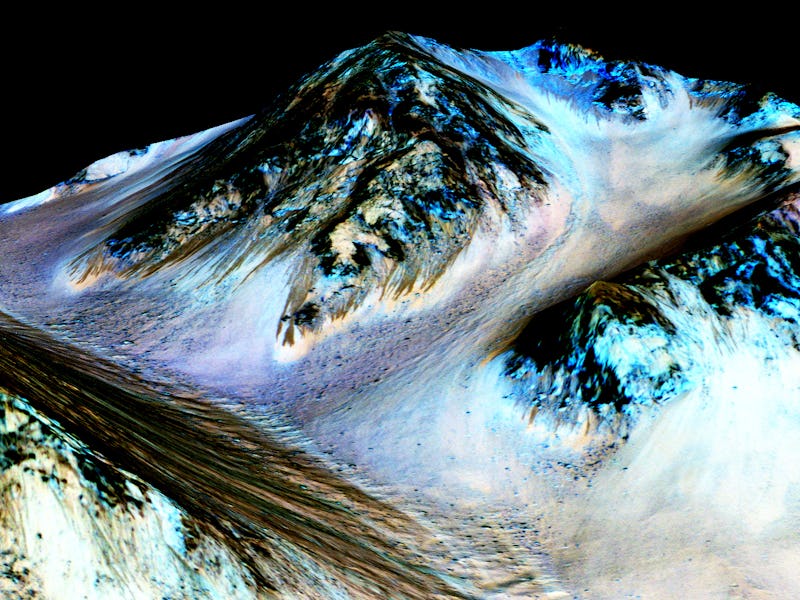Methane Bursts Could Have Helped Spark Ancient Alien Life on Mars

In September 2015, NASA confirmed that liquid water currently flows on Mars. Scientists also believe at one point, rivers periodically gushed around through the Red Planet — and this has stoked big hopes that those lands once possessed ancient alien life.
But Mars is a cold wasteland — could it really have been warm enough to support running rivers? A new study published in Geophysical Research Letters Saturday says that methane may have acted as a powerful greenhouse gas on ancient Mars, warming up the planet. Interactions between methane, carbon dioxide, and hydrogen created warm periods that allowed Mars to support liquid water.
“When you have a situation where you have running surface liquid water, you have a range of elements necessary for life like carbon and nitrogen and oxygen and neutral pH conditions,” Robin Wordsworth, assistant professor of environmental science and engineering at Harvard and first author of the paper, tells Inverse. “Mars would have been inhabitable and could’ve potentially supported life. That’s in essence what makes early Mars an exciting problem.”
Four billion years ago, Mars may have been a humid planet. At the time, the sun was 30 percent fainter than it is today. The radiation that reached Mars was trapped in the atmosphere as a greenhouse gas. It’s even possible that the environment may have been able to support life.
Today, carbon dioxide makes up 95 percent of the Martian atmosphere, and it’s the most abundant greenhouse gas on Earth. But when you add methane and hydrogen to the mix, it made Mars’ atmosphere much hotter by absorbing the Sun’s radiation. It’s completely different from what it is now because of atmospheric escape over time. In fact, Mars is red because of the escape of hydrogen, which led to rusting on the surface from oxygen.
Billions of years ago, Mars’ geological transformations released methane into the air, which was later converted into hydrogen and other gasses. This process is also occurring on Titan, one of Saturn’s moons.
Methane is not currently abundant in Martian atmosphere now, but some researchers recently found that some microorganisms that produce methane may be able to survive on Mars. And SpaceX CEO Elon Musk wants to produce methane on Mars to generate fuel in his plans for humans to colonize the planet.
This research suggests that planets can have liquid water on the surface, even if they are far away from the star of their system. This research also opens new questions about the geological processes that produced methanes, which future missions to Mars may be able to answer. In 2020, NASA plans to send its Mars 2020 rover to spend two years searching for ancient or current life on the planet, as well as geological clues to find out how the planet was formed. The rover will specifically target sites that are suspected to have once possessed large amounts of surface water, the most likely indicator of life. Europe will also send a rover to Mars as part of its broad ExoMars mission in 2020 to search for signs of life. ExoMars is currently operating an orbital probe which began to evaluate Mars’ atmospheric and geographic features last year.
Wordsworth hopes these missions find more evidence on changes in chemical state, as well as certain materials.
“The other thing which is important to constrain our understanding is the extent to which minerals like carbonates are present on the surface,” Wordsworth says. “…If there’s a lot of carbonates on the atmosphere, that means a lot of CO2 was present in the past.”